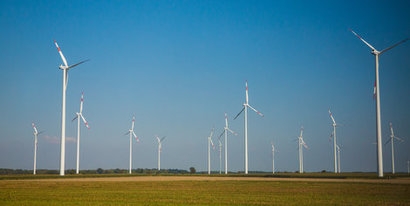
The updated Renewable Energy Sources Act foresees that by 2030, 80 percent of the electricity consumed in Germany should come from renewables and virtually 100 percent as of 2035. The updated bills, labelled Easter package (“Osterpaket”), enshrine the principle that the “use of renewable energies is in the overriding public interest and serves national security”.
With this new target, Germany is now in line with the International Energy Agency’s 2050 roadmap, which recommends that OECD countries should achieve net zero emissions in their electricity generation by 2035. It makes Germany the first G7 country to implement clean power by 2035 into law, with Canada, the United Kingdom and the United States having set similar targets. They are still behind renewable power champions like Uruguay which is at nearly 100 percent or Kenya where renewables provided over 90 percent of the power generation.
The accelerated renewable energy expansion is seen as a key element in making the country less dependent on Russian fossil fuel supplies and enhancing national and European security. The new 2030 targets represent a doubling of Germany's onshore wind energy capacity to 115 gigawatts (GW) and a tripling of solar energy to 215 GW, along with an expansion of offshore wind energy to 30 GW.
As this year’s lead of the G7, Germany has the opportunity to work towards a G7 recognition of clean energy investment as a no-regret path towards independence from Russia.
According to Ember’s latest Global Electricity Review, fossil energy sources still made up 47 percent of the electricity generated in Germany in 2021, while the renewable energy share, consisting of wind and solar power, was just short of 29 percent.
Earlier this month, Germany’s finance minister Christian Lindner (pro-business FDP) called renewable power sources “freedom energies” that can allow Germany a greater degree of energy independence, when he announced about 200 billion euros for investments in decarbonisation and greater independence from imported fossil fuels over the next four years.
“The new energy and climate policy measures are urgent” said Andreas Kuhlmann, Head of the German Energy Agency (dena). “Not only because of the war in Ukraine, but above all because we must do our part to combat global climate change and lead our country into a sustainable future. The effects of the war in Ukraine are merely a terrible further development that has made even the last doubter realize this.”
Ben Backwell, CEO of the Global Wind Energy Council (GWEC), added that GWEC welcomes the increased commitment to wind energy as a response to the current global energy crisis and that as G7 president in 2022, Germany is showing other countries that wind and renewable energy are the channels to a more secure and resilient energy system, and that a series of reforms will be needed to urgently accelerate their deployment.
“We welcome the move to put a financing scheme in place to sustain strong incentives to invest in onshore and offshore wind energy through to 2045, and to simplify permitting procedures to ensure rapid deployment of projects” Mr Backwell said. “Wind energy’s growing role in the overriding public interest, as a means to protect energy consumers and support sustainable growth, is gaining traction with this law, and we hope other G7 and G20 countries follow suit.”
What do the bills state in detail about each energy source?
Photovoltaics
Offshore wind
Onshore wind
Biomass
The bills will be formally adopted by the parliament within the current session cycle most likely in June.
For additional information:

